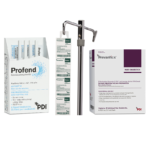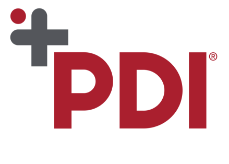Interventional Care


We notice that you are visiting us from . This site only services US-based visitors. Would you like to visit the site that is appropriate for your location?

After the pandemic, NHSN COVID-19 reporting requirements were put into place. It was thought that the likelihood of expanding that mandatory reporting to the LTC HAI components of C-Diff, MDROs and UTIs would be high, since it has long been proposed that LTC facilities would have to join the ranks along with acute care for reporting and benchmarking of HAIs.
The fact is, LTC facilities will be benchmarked for infections, but not in the same way acute care is. On August 3, 2022 the 2023 SNF Prospective Payment System final rule was published3. It has a lot packed into it, but there are a few important highlights specific to infection control:
The long-term care environment is complex and poses unique challenges for infection prevention. With new HAI reporting requirements in place, there will be public data on how LTC facilities measure up when looking at infection prevention tasks and efforts.

Long-term-care is not only a healthcare setting, but also the place that residents call their home. This can pose distinctive questions as to how infection control efforts, such as cleaning, disinfection, and decolonization, should be implemented to prevent the spread of disease. The residents are particularly susceptible to infections due to age-related comorbidities predisposing them to infection, as well as a decline in overall immune defenses. To compound the difficulty, many of the buildings themselves have carpeted hallways and other soft surfaces that are easily contaminated.
What can an Infection Preventionist do to help mitigate risks and prepare for the expansion of infection control efforts in the face of new reporting requirements?
Perhaps the first thing to establish is cleaning and disinfection practices that are thorough, effective, and efficient. There are many studies showing that environmental services staff (EVS) wipe down only 50% or less of surfaces4. Visual inspections and rounds are not enough to ensure quality oversight. The CDC states that for surfaces to be cleaned appropriately there should be a consistent pattern for cleaning rooms and shared equipment, as well as clearly established assignments of who is to clean what5. Quality monitoring can be improved with the use of a checklist or other audit tools.
With the increasing efforts to have long-term care facilities be person-centered, it is crucial to consider the relevance of cleaning schedules that revolve around the residents’ needs and activities. For example, mopping the activities room when bingo is going or the dining room during meals is not a person-centered approach.
Another important point is that the cleaning of residents’ rooms can be particularly challenging, especially if the resident is in some way resistant to the efforts of the EVS staff due to dementia, paranoia, or other issues such as hoarding. Striking a balance between the resident’s rights and the importance of environmental cleanliness is key and should be a part of the resident’s care plan through a multidisciplinary team.
How often to clean and what to clean can sometimes not be clear in a long-term care facility. APIC recommends the following7:
Studies show that the environment and survival of pathogens on surfaces contribute to healthcare-associated infections (HAIs). The survival of pathogens on surfaces can sometimes be months or even years, still posing a threat to infection. A decline in the available number of trained EVS staff during the pandemic has made it even more challenging for LTC facilities to protect their residents.

Sani-24® Germicidal Disposable Wipes give you power with around-the-clock protection. It is the first and only EPA-registered disinfectant with the ability to control HAI-causing microorganisms with continuously active disinfection (CAD).
Consistent disinfection is critical, but the problem is that the surfaces quickly become re-contaminated, especially in high-touch areas. The technology lies in the patented polymer which, when applied to the surface, actually “binds” to the surface and is not wiped off or removed. The disinfectant is also bonded to the surface and provides continuous disinfection despite lots of touches or recontamination.
The power behind CAD is a multi-layer protective “shield” on the surface. It can be used not only as a disinfectant providing 24-hour protection against ESKAPE pathogens, but also as a regular disinfectant, a soft surface sanitizer, and 7-day mildew and fungal preventative and is compatible with most surfaces making it truly a versatile product for many situations 9.
Can you imagine how useful this would be in such settings as long-term care? This disinfectant is ideal for:
With increased focus and resources now available for these efforts, LTC facilities should consider including such revolutionary technologies in any plans for daily and ongoing disinfection efforts.
References: